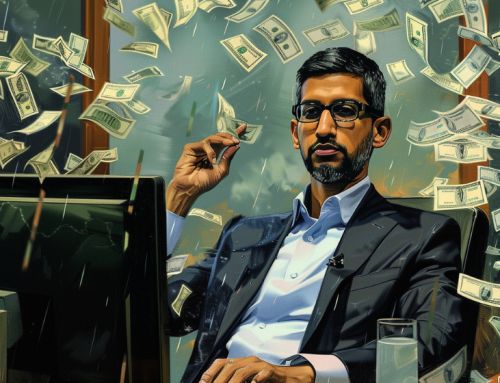
Kodak Jumps Aboard Crypto Craze to Protect Photographers: Creative Revolution or Desperate Bid for Relevance?
On January 9th, film-era photo industry dinosaur Kodak announced a plan to protect photographers’ rights in a licensing partnership with WENN Digital to create a blockchain-based KODAKOne platform complete with a “KODAKCoin” crypotcurrency token. While the lucrative deal saw Kodak’s stock price more than triple in the days following the announcement, for many crypto buffs and mainstream industry analysts alike Kodak’s announcement is only the latest of seemingly more and more ludicrous initiatives to join in on the recent blockchain and cryptocurrency craze, perhaps heralding an imminent burst of 2017’s “crypto bubble” driven by parabolic growth in Bitcoin, Ethereum, and a panoply of smaller copycat blockchains. So is Kodak jumping back into relevance and innovation after a decades-long fall from glory, or is the company merely jumping the shark?

Over the past week, Kodak shares saw a stratospheric increase after the company’s KODAKOne announcement. Chart via MarketWatch.
While Kodak’s rise to photographic giant in the 20th century and dramatic fall to near ruination in the 21st following the dawn of digital photography has become an infamous and oft-cited cautionary tale of an established industry failing to adapt to new and disruptive technologies, blockchain integration may finally see the photo giant staking a powerful, albeit spectacularly late return to fresh thinking and revolutionary ideas if the company’s KODAKOne hype is to be believed. With digitally enforced photo copyrights secured via blockchain, Kodak may have finally found a way to stem the rampant piracy ubiquitous in the Internet age, giving creative control back to content producers.
The digital revolution has presented photographers–along with filmmakers, musicians, publishers, and others in the creative industries–with a veritable double-edged sword. While digital photography and the Internet has made creating and sharing content easier than ever, it’s become trivially easy to reproduce and steal digital works of art. Across the web, photographers from small-town wedding studios to hobbyist weekend shooters to independent photojournalists risking life and limb have all faced lost revenue, image credits, or both. With a few clicks and perhaps an edit or two, theft or repurpose of copyrighted images has become not only easy but commonplace–even by mainstream media organizations–and the blurred lines and fine print of digital copyrights only complicates the issue.
Kodak, however, seeks to stem the tide of pirated content. According to the company, the KODAKOne platform “will create an encrypted, digital ledger of rights ownership for photographers to register both new and archive work that they can then license,” allowing photographers to “receive payment for licensing their work immediately upon sale, and sell their work confidently on a secure blockchain platform.”
Another aspect of KODAKOne which will be a welcome ally for photographers the web over, if it comes to full fruition, is the service’s “continual web crawling to monitor and protect the IP of the images registered in the KODAKOne system,” meaning that ideally the system can scour the web for pirated content and “efficiently manage the post-licensing process” to protect photographers from piracy and unattributed or unauthorized reuse.
But despite the rosy picture that Kodak paints (er, develops), not everyone is convinced. Forbes damningly disparaged the hype as “Just Like Dot Com In 1999,” and Wired magazine criticized the move as yet another example of companies “pivoting to the blockchain,” putting Kodak in the same league as The Long Island Iced Tea Company and the holding company which operates Hooters, both of which, among others cited, have made seemingly frivolous and half-baked plans (to great shareholder delight) to integrate blockchain technologies of their own. Given that the overall crypto landscape-full of myriad blockchain startups, cryptocurrencies, altcoins, “shitcoins,” and rampant ICO’s including blatantly fraudulent Ponzi scheme–seems a bubble poised to burst, many critics are wary of Kodak’s move, however noble KODAKOne’s apparent intentions.
In June 2017, Kodak’s move would have been seen as a revolutionary harbinger of blockchain technology’s promise, but now in 2018 at “peak crypto” KODAKOne’s announcement reads almost as satire, especially given its late-to-the-party launch and the facepalm-worthy name of the Kodak blockchain’s own token (going on ICO sale January 31st via this website) “KODAKCoin.” KODAKCoin?! Not to discredit the potentially revolutionary applications of blockchain to secure IP copyrights and even pay out royalty-like micropayments for individual uses of content, but it’s hard to imagine a future–even an idyllic one where photographers are protected and justly compensated for their work–where you have you have to pay your wedding photographer or freelancer with a veritable pocketful of such blatantly branded Monopoly money.

One Redditor’s commentary of the KODAKCoin ICO on r/Ethtrader, a popular Ethereum-related discussion group.
To make Kodak’s entry into the cyptosphere even more cringe-worthy, the company also plans to debut new, ludicrously-named “KashMiners” –dedicated Bitcoin-mining rigs that offer customers, for the low fee of only $3,400, the chance to mine trivial quantities of Bitcoin on Kodak’s machines and in turn keep a portion of the profits. LifeHacker ventured so far as to call Kodak’s KashMiner a “Scam You Should Avoid,” and the idea garnered sharp critiques from commentators:
Kodak is selling a Bitcoin miner where you pay for a two year contract and “make a profit.” (*at current prices, Kodak gets half of all bitcoin you produce.) This is the dumbest shit I’ve ever seen at CES. pic.twitter.com/rbzECVEMn7
— Chris Hoffman (@chrisbhoffman) January 9, 2018
So, is the shareholder buzz surrounding Kodak’s announcements–if not the company’s practically self-satirizing products themselves–emblematic of this decade’s own Dot-Com Bubble, a sort of bellwether of peak crypto-madness driven by flimsier and flimsier hype-driven “vaporware”? It’s hard to tell, because as with the Dot-Com Bubble, the present-day feeding frenzy of runaway speculative investment in the cryptosphere shares deep waters with some bona fide technological advancements that could lead the way to a “Web 3.0,” much in the way that genuine technological growth in the Dot-Com era preceded today’s Internet. And, as explored earlier, Kodak’s blockchain products for all their silly branding foibles aim to address a very real problem with the current Internet and, if successfully implemented, might change the way tomorrow’s content creators make, share, and profit from their work.
And yet, still, bubble talk abounds. In an interview with the BBC regarding KODAKOne and KashMiner, University of Cambridge researcher Garrick Hileman summed up mainstream reactions to Kodak’s announcements by offering the following commentary on the state of the present crypto market : “this is a phenomenon we saw back during the dot com days in the late 1990s where traditional companies would mention some kind of internet strategy and their stock price would jump up […] it’s hard to say if there’s a bubble but it certainly is indicative of a frothy investment market.”
So is the release of a new blockchain platform, cryptocurrency, or ICO token today’s equivalent to launching some baseless “e-” company 20 years ago? And if crypto is indeed in a bubble, might Kodak in a ironic twist be one of the disruptive revolutionaries whose new technology survives the pop of the bubble to become a cornerstone of tomorrow’s web? Only time will tell.







Leave A Comment